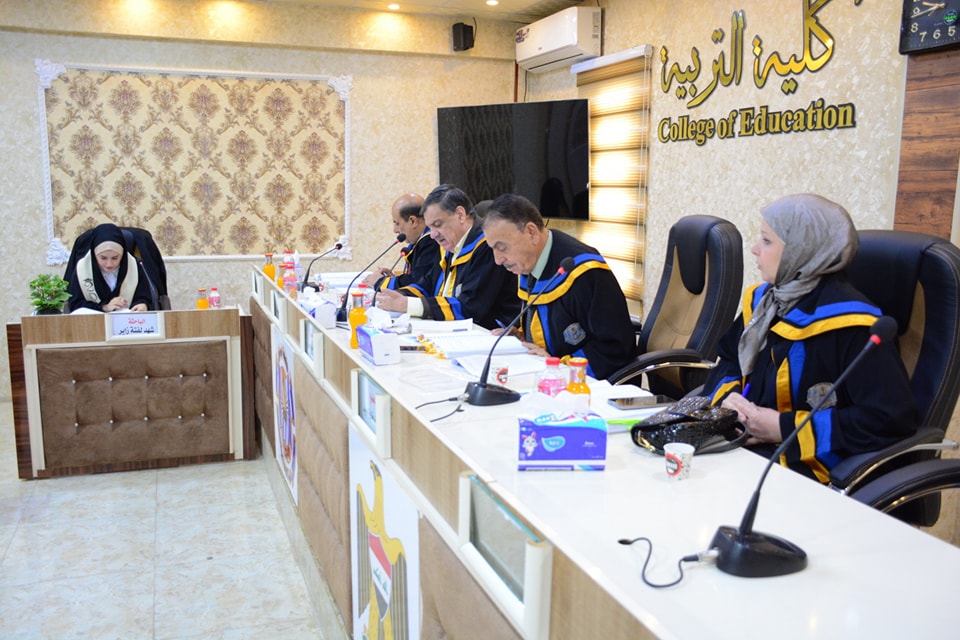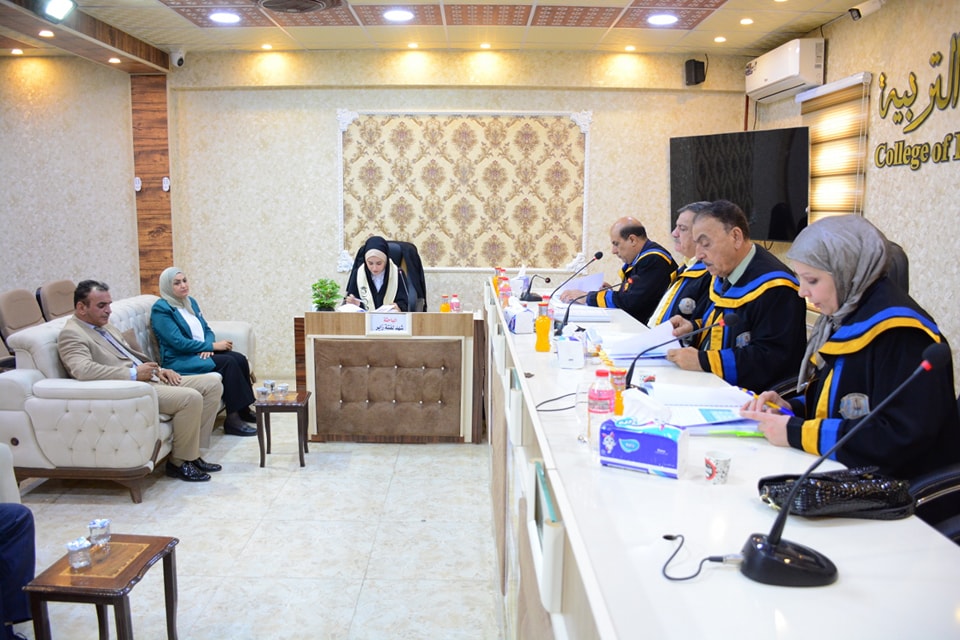A master’s thesis was discussed in the Department of Geography, College of Education, University of Maysan Tagged (change in the amount of standard deviation and coefficient of temperature difference during the fall and spring seasons in Iraq. For postgraduate student Shahad Lafta Zayer Under the supervision of Professor Dr. Ali Ighlees Nahi Al-Saeedi. The thesis aims to shed light on an important aspect of the ongoing climate changes in Iraq’s climate, which is the change in thermal characteristics during the fall and spring seasons, based on mathematical statistical methods. Clarifying the picture of the change in maximum and minimum temperature rates and detecting the change in the amount of the standard deviationAnd its coefficient of temperature variation during the two seasons of transport in Iraq The importance of the study stems from the fact that it sheds light on the change in the characteristics of one of the most important climatic elements, which is temperature, as detecting changes in the amount of deviation and the coefficient of variation in the rates of maximum and minimum temperatures during the transition seasons is of great importance as it draws attention to the nature of the change in energy exchange. current over Iraq, considering that temperatures are a reflection of that exchange, especially in the transitional seasons, which are characterized by varying weather changes. The thesis reached a set of results, the most important of which are:
1- It was revealed through analysis of the fall months that the highest rate of change in maximum temperatures was recorded at the Mosul site in the month of November, reaching (11.9%).The lowest rate of change was recorded during the fall months at the Samawah site, reaching (0.2%). During the spring months, the highest rate of change was recorded at the Kirkuk site, reaching (8.4%), and the lowest rate was recorded at the Al-Hay and Al-Amarah sites, each reaching
(0 .3%) in the month of April.
2- The climate of Iraq is characterized by continental climate, as the increase in extent explains its size, as the autumn season, specifically in the month of September, records the highest rate of change during this season in the Basra location, as the rate of change in extent was recorded (17.5%), and the lowest rate of change in extent was recorded in the Kirkuk location in the month of October. The second rate reached (0.8%). During the spring season, the month of April recorded the highest rate of change in the Al-Hayy and Al-Amara sites, as they recorded (10.1%), and the month of March recorded the lowest rate in the Baghdad site, as it reached (0.7%).
3- It was found that the highest average standard deviation of minimum temperatures was recorded in the fall months, in the month of October at the Amara site, recording (3.4), while the lowest deviation in the fall was recorded in the month of October at the Rutbah site, when it reached (2%).
4- The highest variation in minimum temperatures during the fall and spring seasons was in the month of March at the Kirkuk site, when it was recorded (14.7%), and the lowest variation was recorded in the month of September at the Samawah site, when it was (7.58%).




